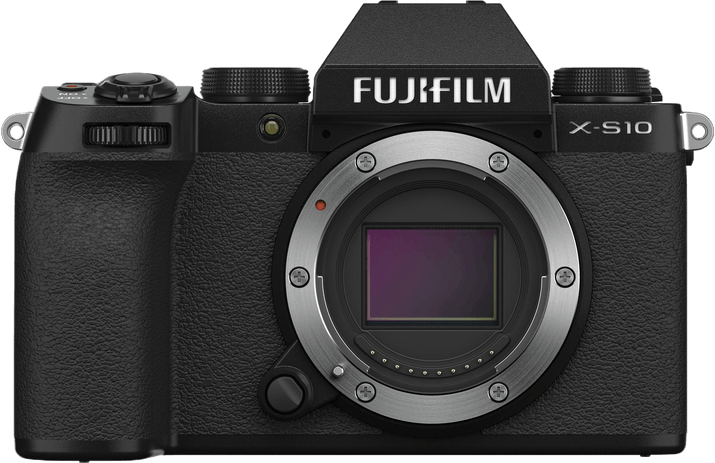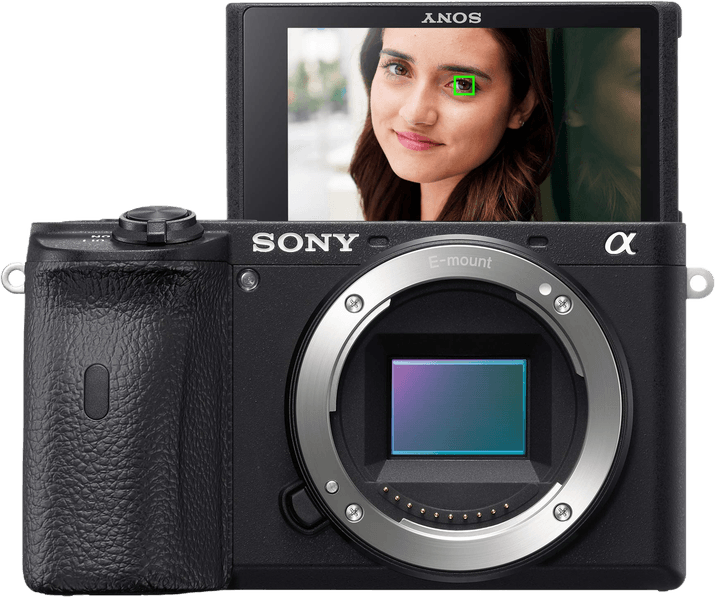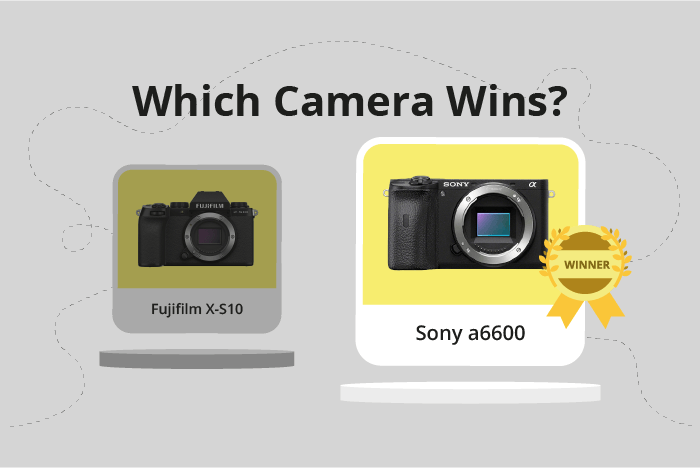Fujifilm X-S10 vs Sony a6600 Comparison
Fujifilm X-S10

Sony a6600

The Sony a6600 outperforms the Fujifilm X-S10 with a score of 75/100, compared to the X-S10’s 69/100. Both mirrorless cameras share similarities, like their release years (2019 and 2020) and comparable launch prices ($1200 and $999).
The Sony a6600 surpasses the Fujifilm X-S10 in terms of weight and size, being slightly lighter (503g vs. 465g) and more compact (120 x 67 x 69mm vs. 126 x 85 x 65mm). These differences make the a6600 more portable and convenient for on-the-go photography.
On the other hand, the Fujifilm X-S10 has a lower launch price, making it a more budget-friendly option. However, the difference in scores suggests that the Sony a6600 offers better performance and features for the higher price.
Taking into account the scores, specifications, and price, the Sony a6600 proves to be the superior choice for those seeking better performance in a compact, lightweight design. The Fujifilm X-S10, however, remains a viable option for photographers on a tighter budget.
Fujifilm X-S10 vs Sony a6600 Overview and Optics
The Sony a6600 outperforms the Fujifilm X-S10 in optics, scoring 76/100 compared to the X-S10’s 72/100. Both cameras share several specifications, such as their CMOS sensor type, APS-C sensor size, and built-in image stabilisation. Additionally, they both possess unique lens mounts, with the X-S10 featuring a Fujifilm X mount and the a6600 equipped with a Sony E mount.
The Sony a6600 boasts a higher DXOMARK score of 82 for its sensor, which contributes to its superior optics performance. Furthermore, the a6600’s Bionz X processor enhances its image processing capabilities. Despite having slightly fewer megapixels (24.2) than the X-S10 (26), the a6600 compensates with a faster shooting speed of 11 frames per second, enabling it to capture fast-moving subjects with greater ease.
Conversely, the Fujifilm X-S10 holds an advantage in megapixels, with 26 compared to the a6600’s 24.2. This allows the X-S10 to capture more detail in images. However, the X-S10’s shooting speed is significantly higher at 20 frames per second. Despite its lower optics score, the X-S10’s X-Processor 4 remains a powerful image processor.
Considering these points, the Sony a6600 emerges as the stronger contender in terms of optics, thanks to its higher DXOMARK sensor score and faster shooting speed. The Fujifilm X-S10, while not as strong in optics, still offers impressive specifications such as a higher megapixel count and faster shooting speed. Ultimately, users should weigh these factors when choosing between the two cameras, keeping in mind their specific needs and preferences.
Fujifilm X-S10 vs Sony a6600 Video Performance
The Fujifilm X-S10 and Sony a6600 both have a video score of 91/100, indicating that they offer similar video capabilities. They share key specifications such as 4K video resolution and built-in time-lapse functionality. However, there are differences in their video features that may impact a user’s choice between the two models.
The Fujifilm X-S10 has a higher maximum video dimensions of 4096 x 2160, compared to the Sony a6600’s 3840 x 2160. This means that the X-S10 can capture slightly more detail in its video footage. Additionally, the X-S10 boasts a significantly higher maximum video frame rate of 240fps, as opposed to the a6600’s 100fps. This allows the X-S10 to produce smoother slow-motion footage and better capture fast-moving subjects.
On the other hand, the Sony a6600 does not have any clear advantages in video capabilities over the Fujifilm X-S10. The shared specifications, such as 4K resolution and time-lapse functionality, make both cameras suitable for a variety of video projects.
Taking into account the specifications and differences, the Fujifilm X-S10 emerges as a more versatile option for videographers due to its higher maximum video dimensions and frame rate. While the Sony a6600 still offers solid video performance, it lacks any standout features that would make it a better choice over the X-S10 for video production. Therefore, users seeking superior video capabilities should consider the Fujifilm X-S10 as their preferred choice.
Fujifilm X-S10 vs Sony a6600 Features and Benefits
The Sony a6600 wins the features comparison with a score of 81/100, while the Fujifilm X-S10 scores 70/100. Both cameras share several specifications, including a 3-inch screen size, touchscreen capability, flip screen, and Bluetooth connectivity. Neither camera has GPS functionality.
The Sony a6600 outperforms the Fujifilm X-S10 in certain aspects. It has WIFI connectivity, allowing users to transfer photos and videos to other devices more conveniently. This feature gives the a6600 an advantage for those who prioritize easy sharing and remote control of their camera. Additionally, the a6600’s screen resolution is slightly lower at 921,600 dots compared to the X-S10’s 1,040,000 dots. However, this difference in resolution is not significant enough to impact the overall user experience.
On the other hand, the Fujifilm X-S10 has a higher screen resolution, offering a clearer and more detailed display. This advantage may be appreciated by users who focus on image composition and reviewing their shots on the camera.
Upon examining the features of each camera, the Sony a6600 is the better choice for users who value WIFI connectivity and seamless photo sharing. The Fujifilm X-S10, with its higher screen resolution, caters to those who prioritize image clarity on the camera screen. While both cameras have their unique strengths, the Sony a6600 emerges as the winner in this comparison due to its more advanced features.
Fujifilm X-S10 vs Sony a6600 Storage and Battery
The Sony a6600 outperforms the Fujifilm X-S10 in storage and battery, with a score of 48 to 35. Both cameras have one memory card slot and support USB charging. They also accept SD, SDHC, and SDXC memory cards. However, the a6600 has an edge, as it also takes Memory Stick Pro Duo cards.
The a6600’s battery life is significantly better, offering 810 shots compared to the X-S10’s 325 shots. This advantage comes from the use of the NP-FZ100 battery, as opposed to the X-S10’s NP-126S battery. The Fujifilm X-S10 does not have any clear advantages in storage and battery.
In terms of storage and battery, the Sony a6600 is the clear winner. Its longer battery life and additional memory card compatibility make it the better choice for users who need extended shooting sessions and versatile storage options.
Fujifilm X-S10 vs Sony a6600 – Our Verdict
Are you still undecided about which camera is right for you? Have a look at these popular comparisons that feature the Fujifilm X-S10 or the Sony a6600:

